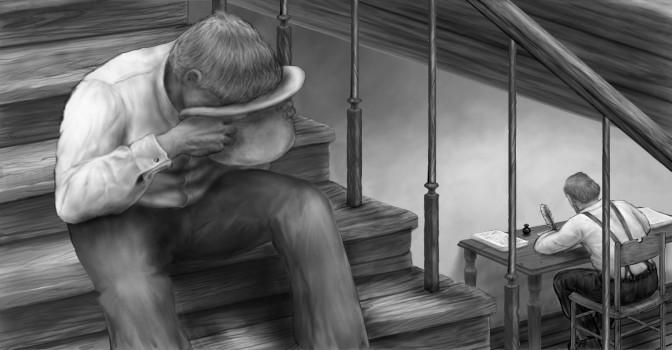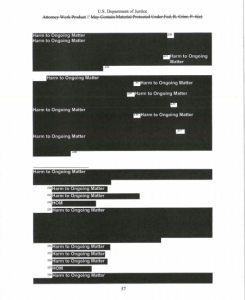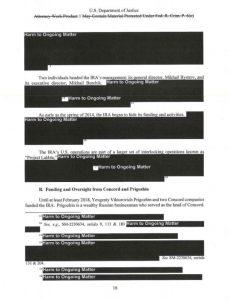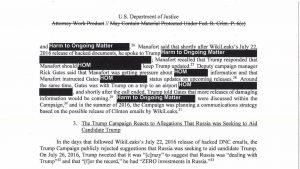Wayne Booth, the literary scholar, must have heard the sacred origin story a thousand times when he was a child in American Fork, Utah. How the Prophet Joseph Smith translated The Book of Mormon, which was presented to him in golden tablets by a strange angel named Moroni and which was written in a language only Joseph Smith himself could translate. Smith was able to accomplish this feat by consulting a prophetic seer-stone, or “peepstone,” he kept handy in his hat. The Church of Latter Day Saints, historically, equivocates on the peepstone part of the tale, because this narrative detail rhymes too well with earlier, unsavory episodes in Smith’s life. In New York and Pennsylvania, well before the visions of golden tablets and the strange angel, Smith used peepstones as props to lure paying customers, pirate-style, to treasures that he may or may not have buried himself, in supposedly “hidden” locations which had been “revealed” to Smith through said stones. Smith was eventually found guilty by the state of New York of this unusual form of criminal hucksterism, and later by the State of Ohio for illegal banking and banking fraud, and later yet of treason by the states of Illinois and Missouri, where he threatened a public official, committed perjury, and conspired to murder a sitting judge.

It’s hard to say exactly the impact the origin story of Mormonism may have had on young Wayne Booth, and whether he was even aware of Joseph Smith’s issues of character. But however one might measure the affect or effect of the story, its narrative power started to wane in Booth’s teenage years. It continued to dim through his undergraduate studies at Brigham Young University in Salt Lake City. But when in the 1940s, Booth set foot on Aristotelian ground at the University of Chicago, where peepstones were definitely out and questions of form and genre and matters of textuality were definitely in, Booth began to understand the many wily ways of narrative. It was likely there in Chicago that Booth realized in rhetorical terms that Joseph Smith was a textbook case of an unreliable narrator.
Doctor of Philosophy Booth never fully fell out of the Mormon fold, and he continued to claim it as his religion, however pluralistic or even secular his version of it might be. In 1961, he published a landmark book of literary criticism called The Rhetoric of Fiction, in which he set forth the characteristics and habits, the literary pathology if you will, of the unreliable narrator.
Narrators are the gatekeepers to the stories they tell. They make the world they depict for us, and we see that world through their eyes. In fiction, unreliable narrators betray themselves in a variety of ways or, to be more precise about it, they are betrayed by the writers who invented them. Unreliable narrators can be deceptive, but readers nevertheless slowly begin to doubt the narrator when contrary facts are revealed. An unreliable narrator can inspire readers who are therefore alert, investigative, and curious. Unreliable narrators omit key information or events, which comes to light from the point of view of another character. They distort or exaggerate or minimize. Unreliable narrators might be known criminals, who are attempting to bury their misdeeds in a cover story, and the reader, who may at first be taken in by an alibi, discovers cracks in the edifice, in the timelines that don’t match up, in differing fact patterns that undermine the narrator’s story. Such a narrator can activate in the reader a detective style of reading, one that compels close tracking and an investigative eye. Such tensions between reader and narrator incite a battle of narrative wills that becomes an essential part of the narrative thread that pulls the plot along.
In nonfiction genres, narration and its patterns look a little different. Nonfiction proposes, by its very declaration, some kind of presumed relation to reality. This of course can take many different genres–biography, memoir, historical study, investigative reporting, anthropological research, legal brief, medical case study, and so forth. But a nonfiction narrator produces a story that, for the most part, is meant to be a stylistically transparent window onto a subject. A crucial feature of that transparency is its verifiable account of facts and evidence and how those have been discovered and understood. It is easy to miss transparency as a style, but it is a distinct style nonetheless, one that would make Will Strunk nod with modest, measured satisfaction. Reliable narration is a style that aspires, oddly, to a lack of style, as clear as a freshly washed window that looks out upon a crisply drawn world.
The unreliable narrative works temporally in reverse: it produces a narrative before the facts can be established, tracked, and before patterns of evidence can pave the path to a storyline. A telltale sign of an unreliable narrative is that the story comes first, while the facts trail in somewhat later. Even if the story and the facts do not match up, such a narrator can only hope that the readers find the story so compelling that they won’t notice the facts have been delayed, or deferred, or suppressed, and that when they are revealed, finally, they align according to a different pattern and thereby tell an altogether different story.

Enter: the Attorney General of the United States announcing the submission of Robert Mueller’s two-volume report on Russian interference in the election of 2016 and on the obstruction of justice in the conduct of the election interference investigation. The report, in two volumes, was given to AG Barr on March 22, 2019. In summarizing the report, the Attorney General interprets the contents for the citizens of the United States, while he simultaneously withholds the document from public view until April 18, 2019. For nearly a month, the Attorney General’s interpretation of the report stands as the only one available, as no one else, with the exception of its authors, have had access to it. Mueller had already summarized the contents of the report for the express purpose of releasing them to the public. But Barr withheld these summaries, shelved them, and instead produced his own falsified, heavily edited alternative.
For nearly a month, Barr’s interpretation of the report had been singularly and unilaterally projected and mediated and tweeted and broadcast. From the start, the conclusions of the report had been miscast, the public perception of it misshaped, its conclusions misstated. Without a primary text to anchor these errant interpretations, they proliferated and took root and self-propagated, unmoored from the investigative narrative itself and crucially from the underlying facts that it uncovered and revealed.
Robert Mueller, the reliable narrator, objected to this chaos of meaning formally in a letter to the Attorney General on March 27, 2019:
“The summary letter the Department sent to Congress and released to the public late in the afternoon of March 24 did not fully capture the context, nature, and substance of this Office’s work and conclusions. We communicated that concern to the Department on the morning of March 25. There is now public confusion about critical aspects of the results of our investigation. This threatens to undermine a central purpose for which the Department appointed the Special Counsel: to assure full public confidence in the outcome of the investigations.”
Ari Melber, the journalist, put it more bluntly: “The report does not say what the Attorney General has said it says.”
There can be little doubt that Barr is an unreliable narrator, and there is little evidence to support the claim that he is or could ever be a reliable one. Every episode of this very recent history supports such a characterization of narrative unreliability. But in fiction, unreliable narrators are set up to get caught. Eventually, we are onto them, and our pleasure in the story increases. In the narrative spaces between narrator, writer and reader, the unreliable narrator is revealed for who he is and, in some weird literary way, is held accountable. One could even go so far as to say that’s what makes reading these kinds of stories engaging. But Barr, as Attorney General of the United States, controls the conditions whereby his unreliability has consequences, whether he gets caught in the discrepancy between the story he’s telling and the facts underlying it. Because as Attorney General, Barr has the power to control the narrative conditions of his own culpability and in this way, he has extended the powers of the Justice Department of the United States to include the exercise of authoritarian style.
Since its release, it is unclear how many Americans have read the report, which remains redacted in large part. It is also unclear how many members of Congress have read it, in either chamber, of either political party.

Redacted Page of the Mueller Report 
Redacted Page of the Mueller Report 



The narrator of a children’s book of fiction may depict a world full of improbable characters, populated by talking animals and unlikely barnyard societies, with their strict pecking orders and rough justice, differing points of view, all motivated by suspiciously human emotions. And yet, the roving eye of the narrator captures perfectly all of the sensory detail of that world, the earthy smell of the livestock pens, the qualities of light as they change throughout the day, the daily squabbles and rituals of the presiding human family, all measured by the rewarding work of a long rural summer day. We relax in the hands of the reliable narrator, who gives rise to the narrative arc that gives witness to a conflict blooming, through a resolution tilting towards closure, when we can, tearily and with emotional closure, turn the final pages of the book or recharge the batteries of our digital readers. Even though we know we are reading something patently impossible, all along the way, we willingly suspend our disbelief, as Samuel Taylor Coleridge in 1817 said we would, more than three centuries ago.

